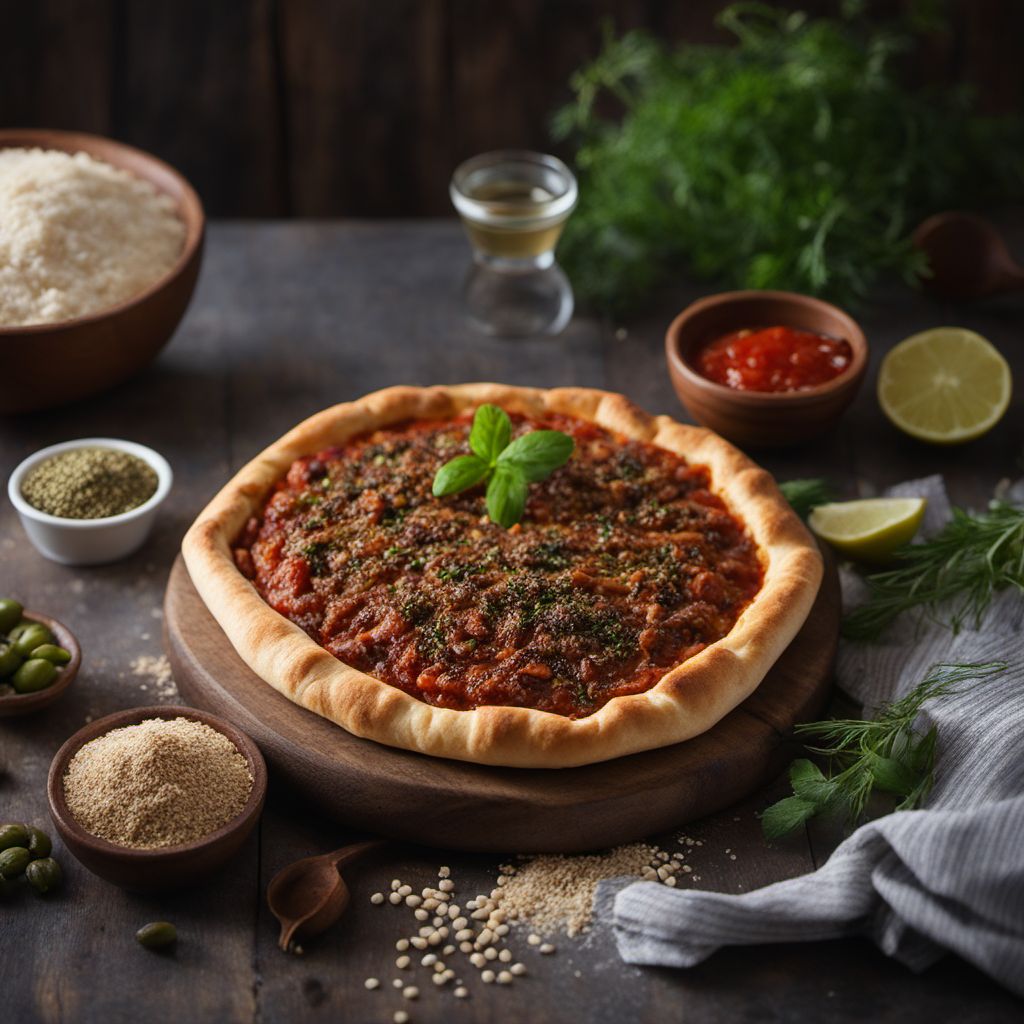
Recipe
Homemade Turkish Ramadan Pide
Savor the Flavors of Ramadan with Homemade Turkish Pide
4.4 out of 5
Indulge in the rich culinary traditions of Turkish cuisine with this homemade Ramadan Pide recipe. This delicious bread, traditionally enjoyed during the holy month of Ramadan, is a staple on Turkish tables.
Metadata
Preparation time
20 minutes
Cooking time
15-20 minutes
Total time
1 hour 40 minutes
Yields
4 servings
Preparation difficulty
Medium
Suitable for
Vegetarian, Halal, Kosher (if using kosher-certified ingredients), Dairy-free (if using water instead of milk), Nut-free
Allergens
Wheat, Egg
Not suitable for
Gluten-free (contains wheat flour), Vegan (contains egg)
Ingredients
-
500g (4 cups) all-purpose flour 500g (4 cups) all-purpose flour
-
7g (2 ¼ tsp) instant yeast 7g (2 ¼ tsp) instant yeast
-
10g (2 tsp) sugar 10g (2 tsp) sugar
-
10g (2 tsp) salt 10g (2 tsp) salt
-
350ml (1 ½ cups) warm water 350ml (1 ½ cups) warm water
-
2 tbsp olive oil 2 tbsp olive oil
-
1 egg, beaten (for egg wash) 1 egg, beaten (for egg wash)
-
Sesame seeds, for topping Sesame seeds, for topping
-
Nigella seeds, for topping Nigella seeds, for topping
Nutrition
- Calories (kcal / KJ): 250 kcal / 1046 KJ
- Fat (total, saturated): 5g, 1g
- Carbohydrates (total, sugars): 45g, 2g
- Protein: 8g
- Fiber: 2g
- Salt: 1g
Preparation
-
1.In a large mixing bowl, combine the flour, instant yeast, sugar, and salt.
-
2.Gradually add the warm water and olive oil to the dry ingredients. Mix until a soft dough forms.
-
3.Knead the dough on a lightly floured surface for about 10 minutes, until it becomes smooth and elastic.
-
4.Place the dough in a greased bowl, cover it with a clean kitchen towel, and let it rise in a warm place for about 1 hour, or until doubled in size.
-
5.Preheat the oven to 220°C (425°F).
-
6.Punch down the dough to release any air bubbles. Divide it into two equal portions.
-
7.Roll each portion into an oval shape, about 1cm (½ inch) thick.
-
8.Transfer the dough ovals onto a baking sheet lined with parchment paper.
-
9.Brush the tops of the dough with beaten egg and sprinkle sesame seeds and nigella seeds generously.
-
10.Bake in the preheated oven for 15-20 minutes, or until the pide turns golden brown.
-
11.Remove from the oven and let it cool for a few minutes before serving.
Treat your ingredients with care...
- Flour — Use all-purpose flour for the best results. Bread flour can also be used for a slightly chewier texture.
- Instant yeast — Make sure your yeast is fresh and active to ensure proper rising of the dough.
- Sesame seeds and nigella seeds — Toast the seeds lightly in a dry pan before using to enhance their flavor.
Tips & Tricks
- For a richer flavor, you can add a tablespoon of olive oil to the dough.
- If you prefer a softer crust, cover the pide with a clean kitchen towel after baking.
- Experiment with different toppings such as cheese, olives, or minced meat for a variety of flavors.
- Serve the pide warm for the best taste and texture.
- Leftover pide can be stored in an airtight container and reheated in the oven for a few minutes before serving.
Serving advice
Serve the Homemade Turkish Ramadan Pide as a main dish with a variety of dips, such as hummus, tzatziki, or baba ganoush. It is also delicious when served alongside grilled meats or as a side to soups and stews.
Presentation advice
To enhance the presentation, sprinkle some fresh herbs, such as parsley or dill, on top of the pide just before serving. You can also serve it on a wooden board or a traditional Turkish bread basket.
More recipes...
For Ramazan pidesi
More Turkish cuisine dishes » Browse all

Cağ kebabı
Turkish lamb kebab
Cağ kebabı is a traditional Turkish dish that is made with lamb and a variety of spices. It is a flavorful and tender dish that is perfect for a...

Semsek
Semsek is a traditional Turkish pastry that is filled with cheese and herbs. It is a popular snack that is often served with tea.

İslim kebabı
İslim Kebab
İslim kebabı is a traditional Turkish dish that is typically made with lamb. The dish is slow-cooked with a variety of spices and served with...





